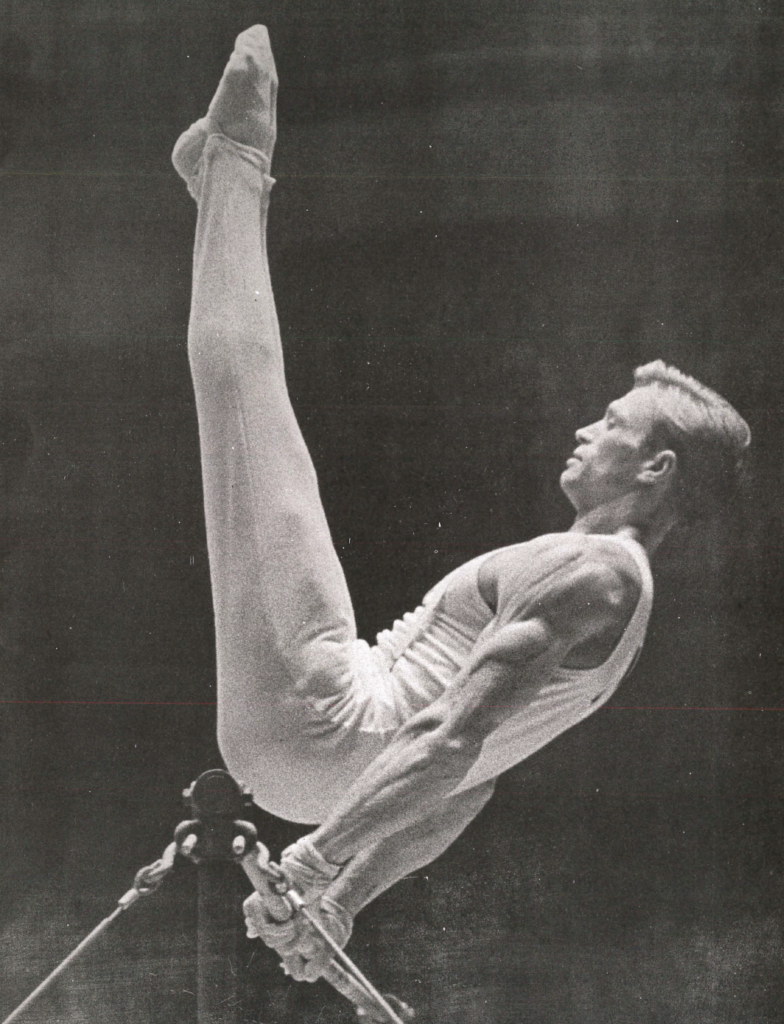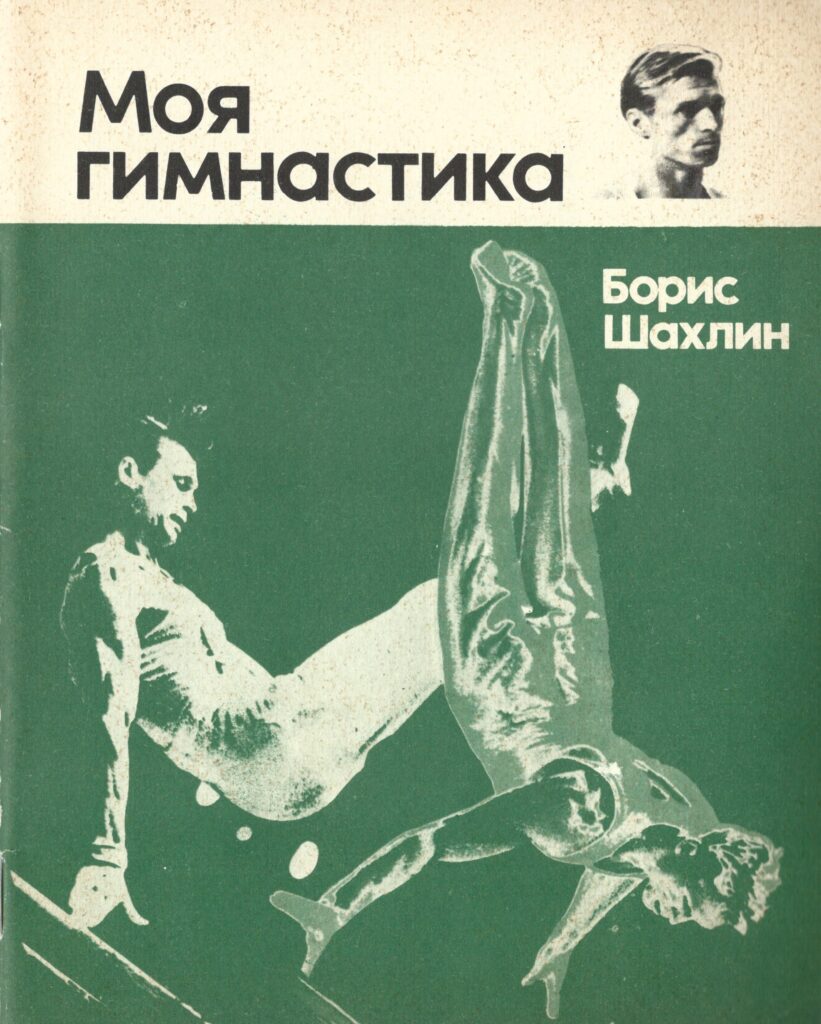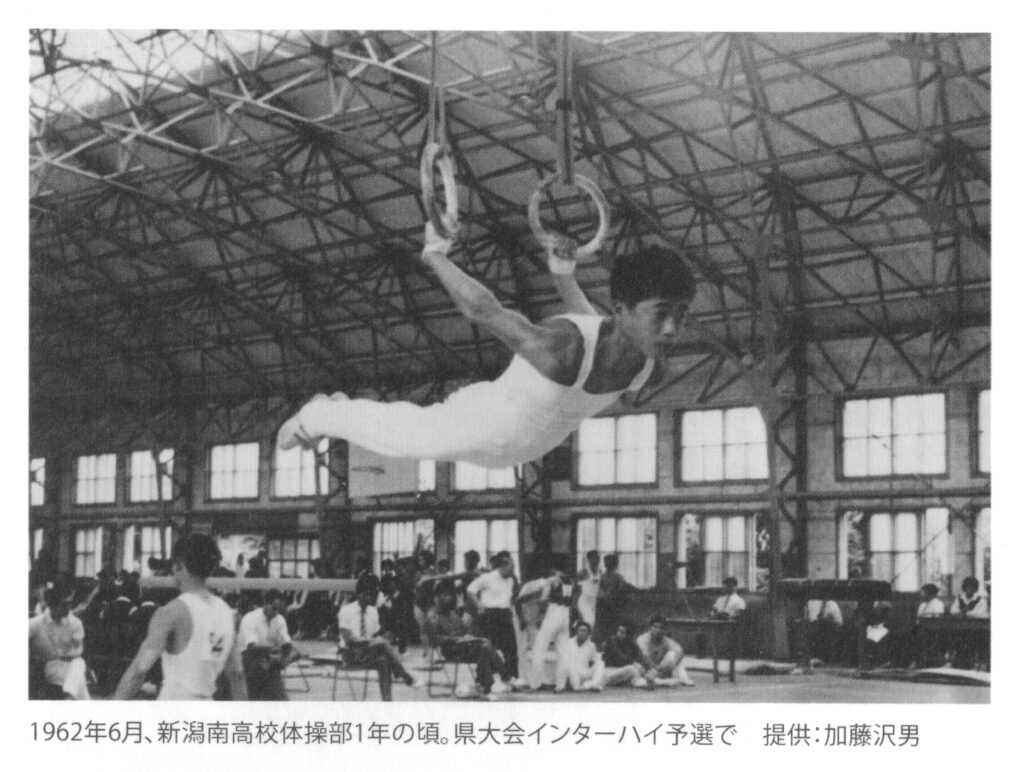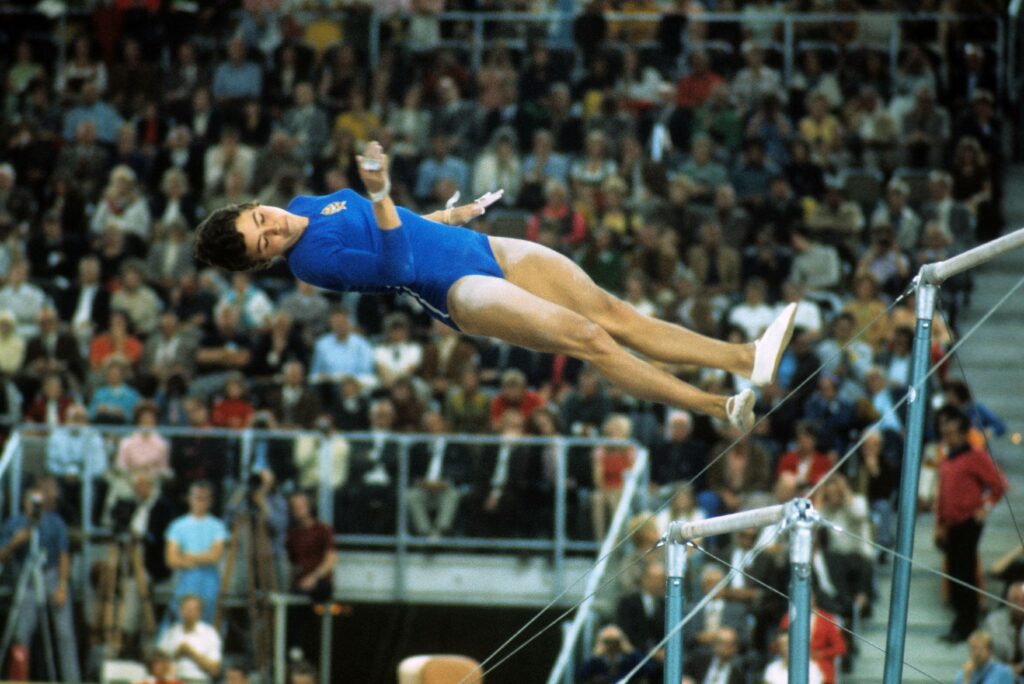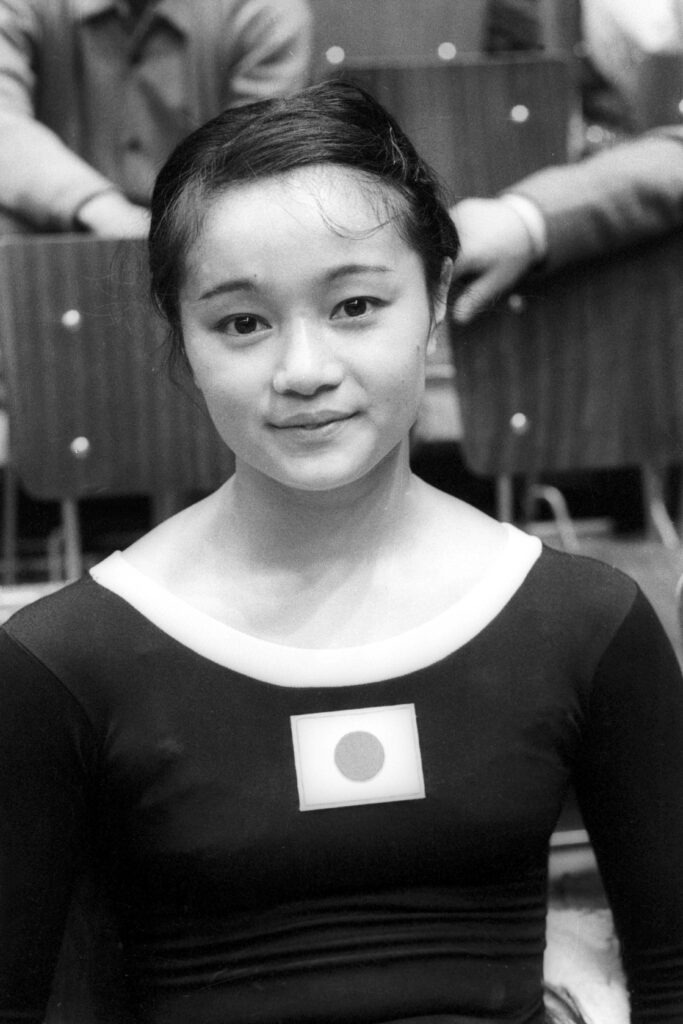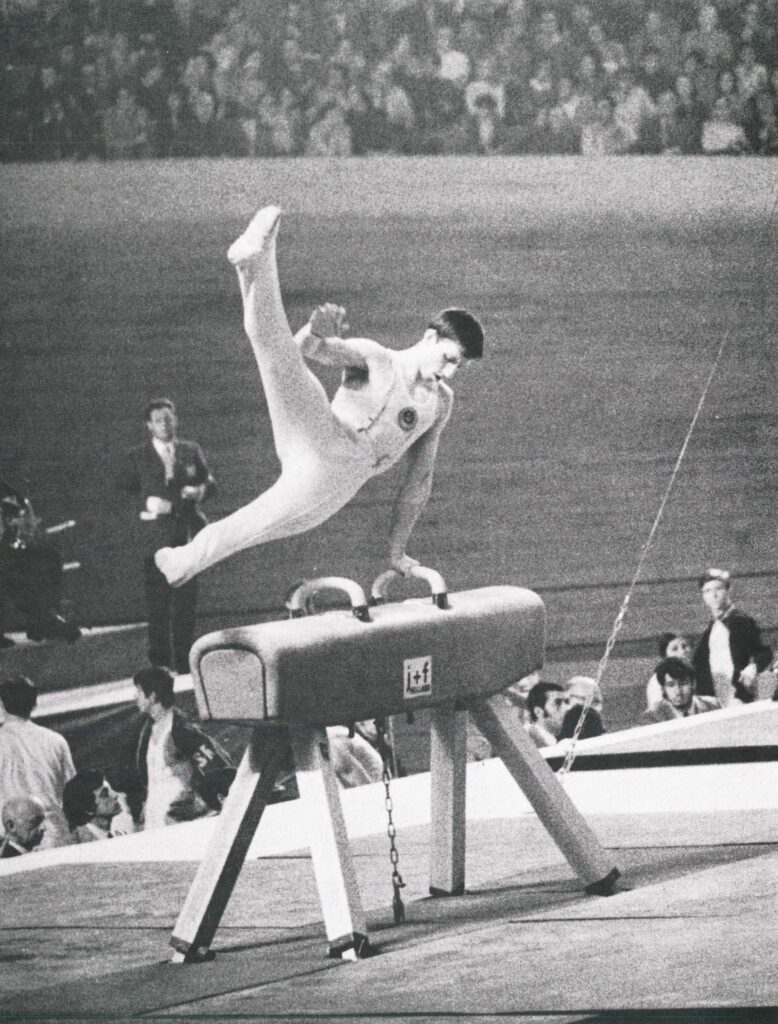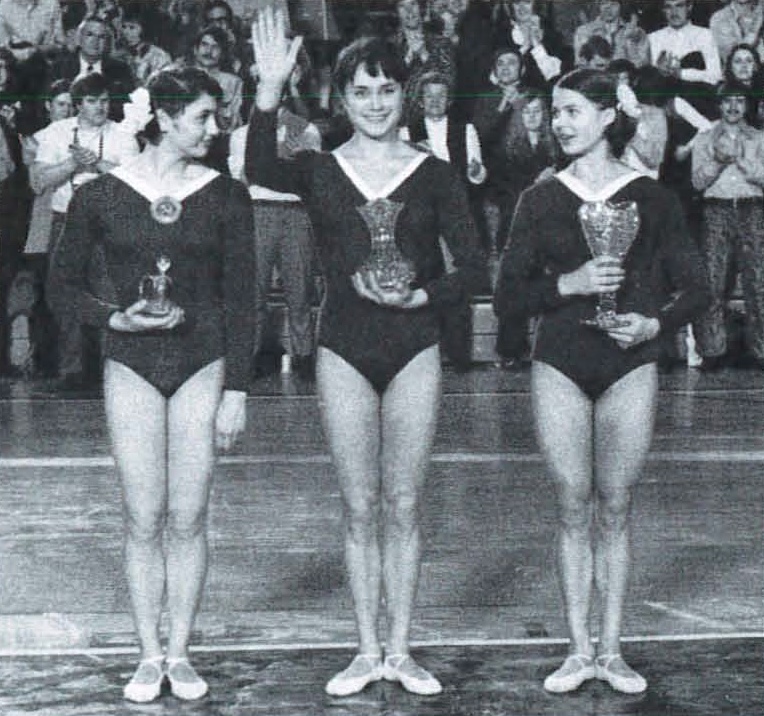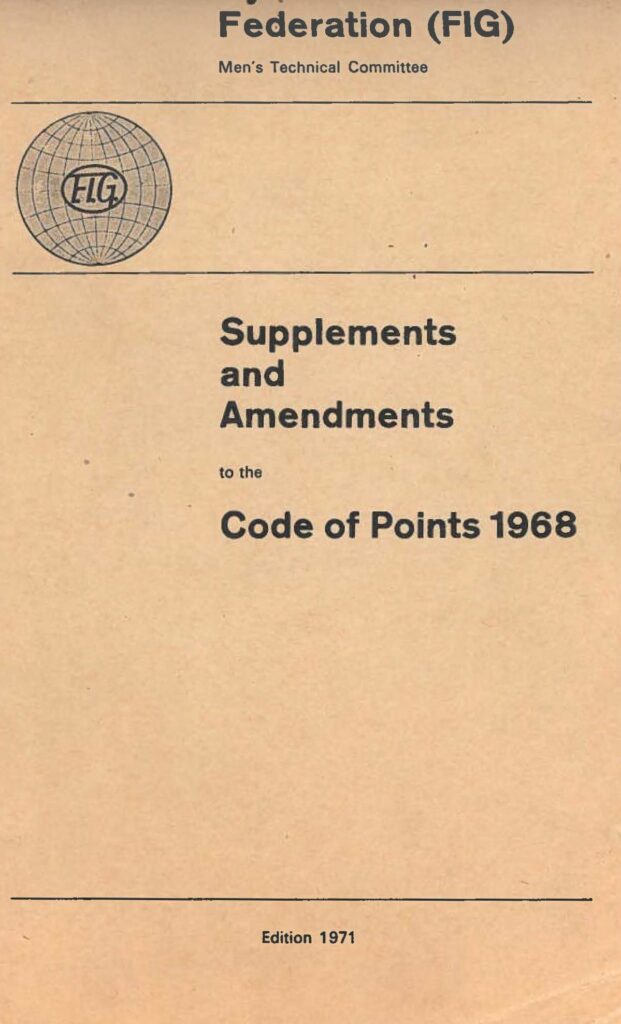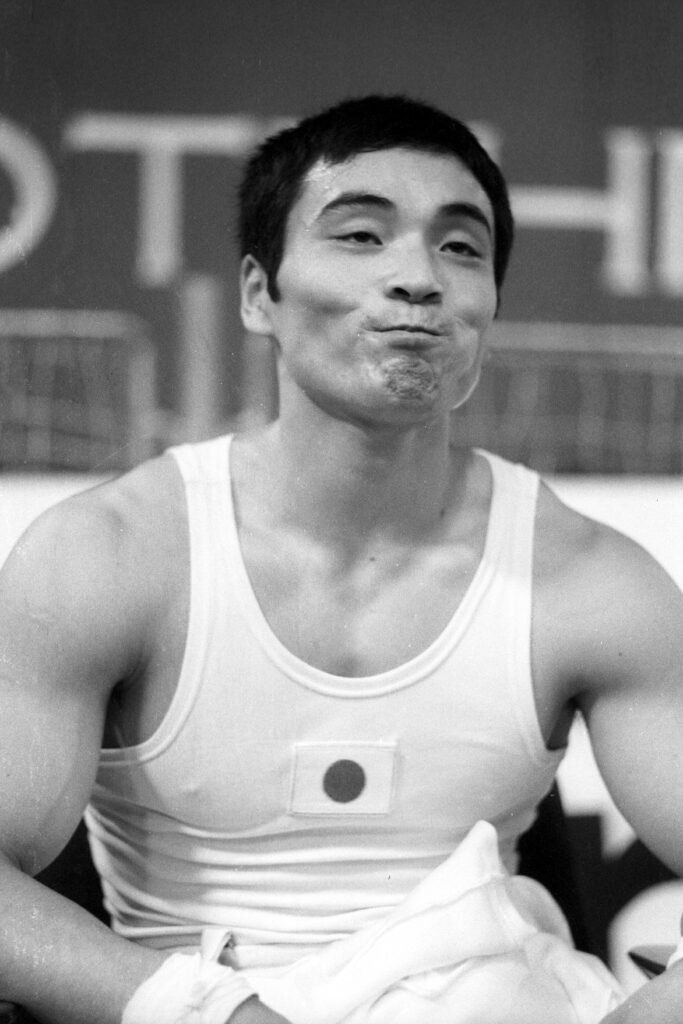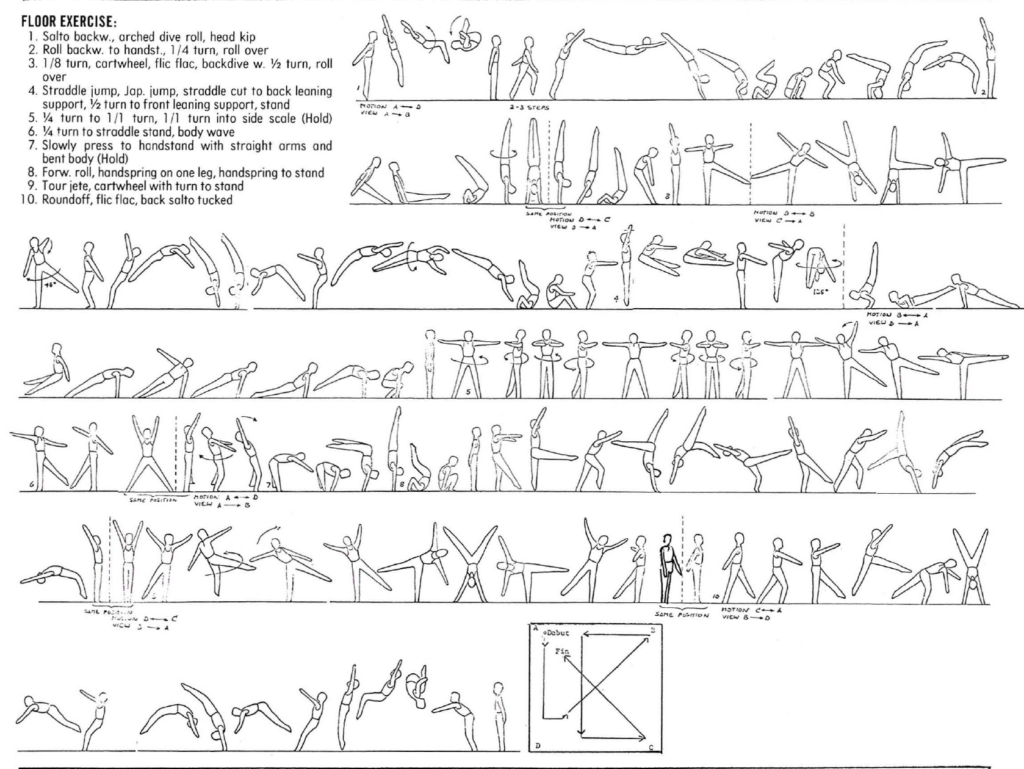In the third chapter of My Gymnastics, Boris Shakhlin recalls his move to Kyiv, as well as his participation in the 1954 World Championships, the 1955 Cup of Europe, and the 1956 Olympics. Along the way, he tells some interesting stories:
- How Yuri Titov learned to sing songs while doing pommel horse
- How Viktor Chukarin survived a concentration camp during World War II
- How the gymnasts burned their hands on high bar during the 1954 World Championships in the hot Italian sun
- How he got the nickname the Russian Bear
- How the all-around gold medal at the 1955 European Cup had a gymnast’s name pre-engraved on it (and it wasn’t his name)
- How judging started during podium training — not on the first day of competition.
